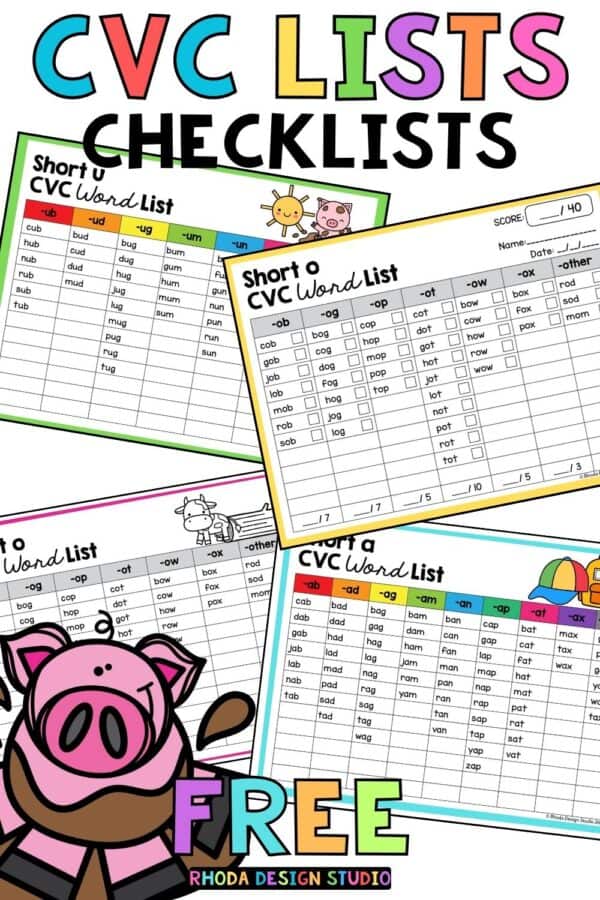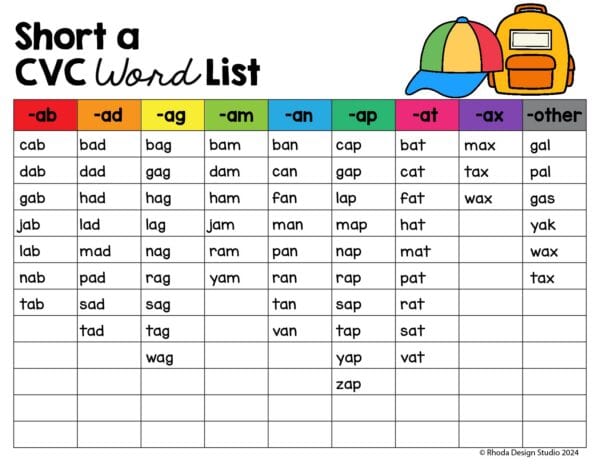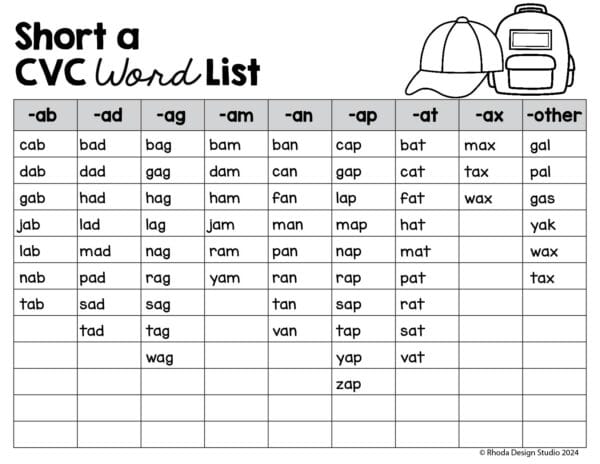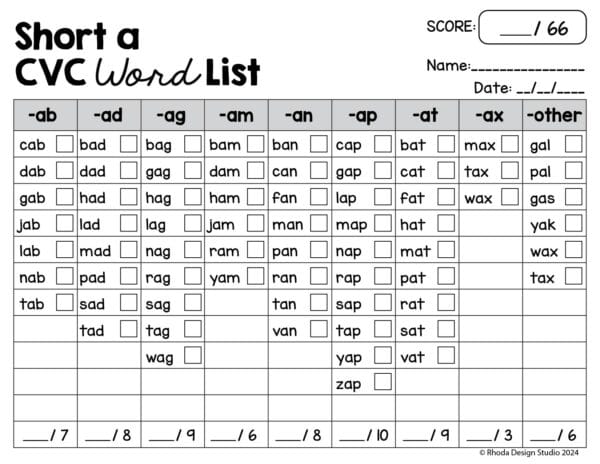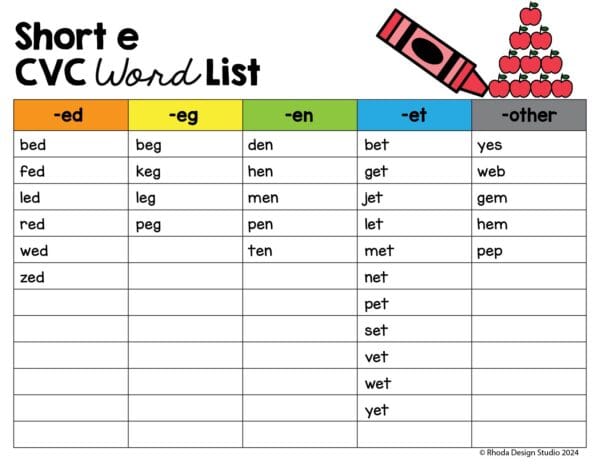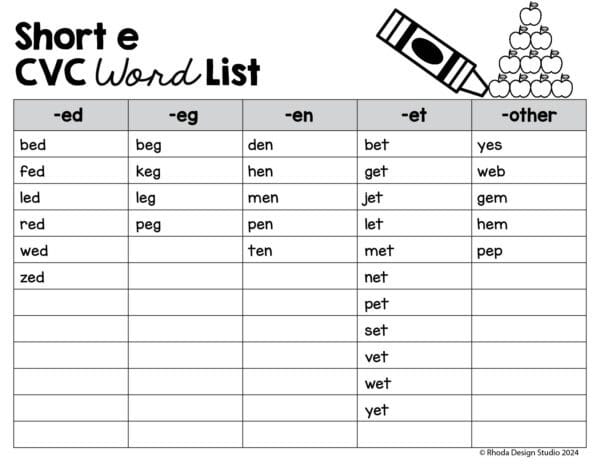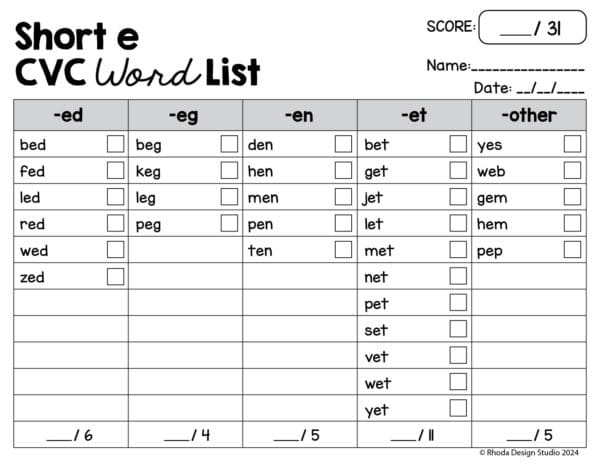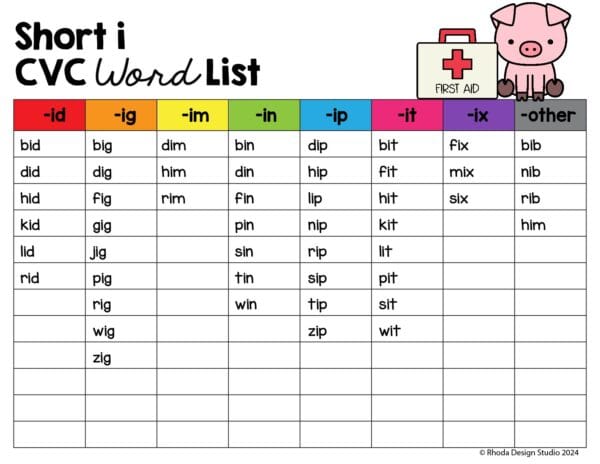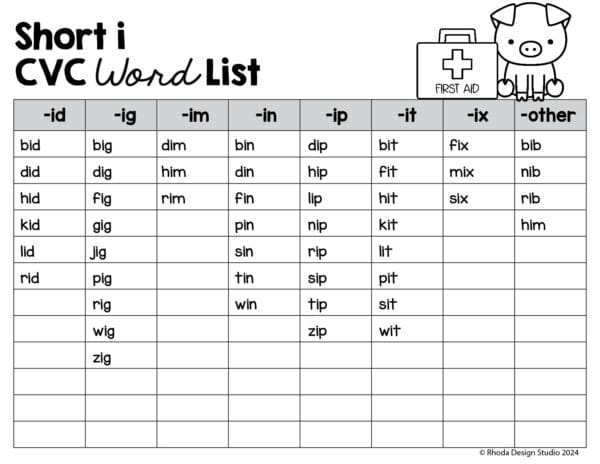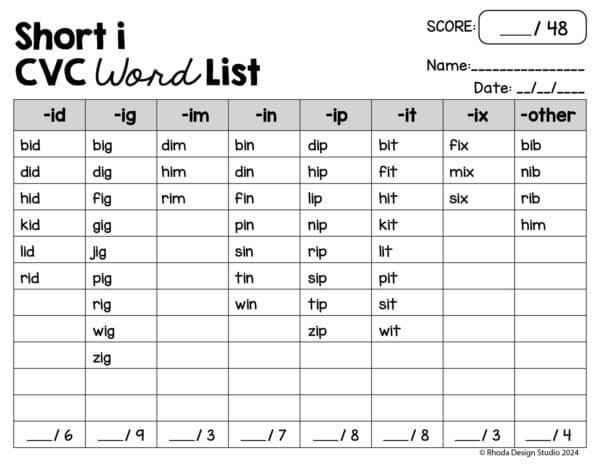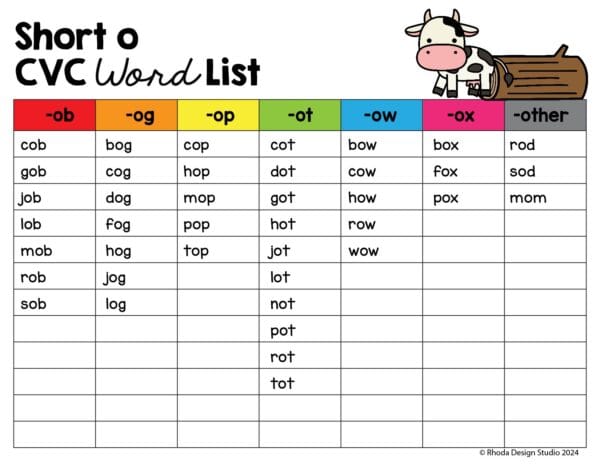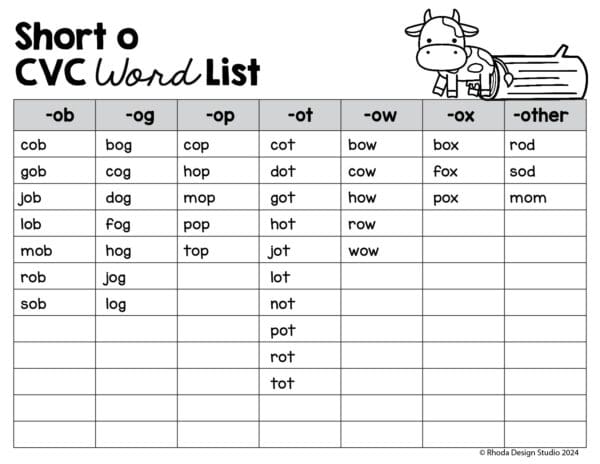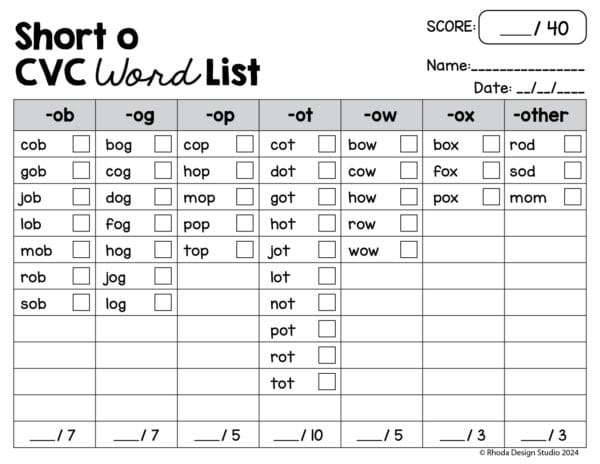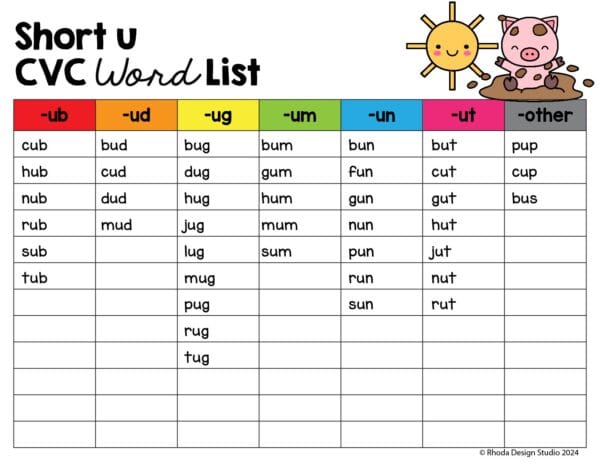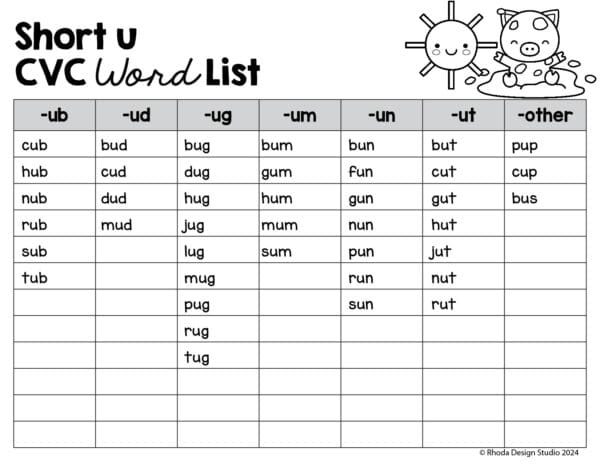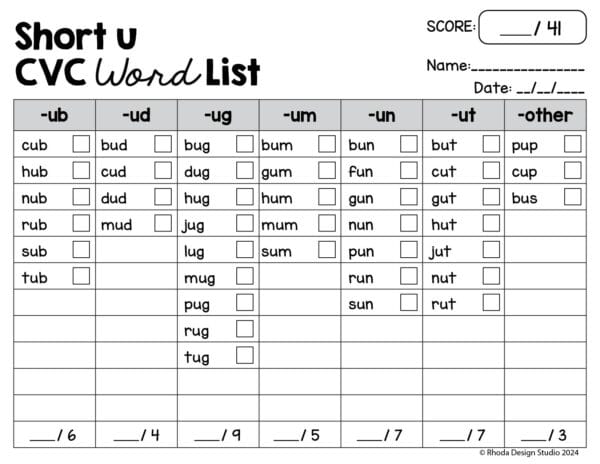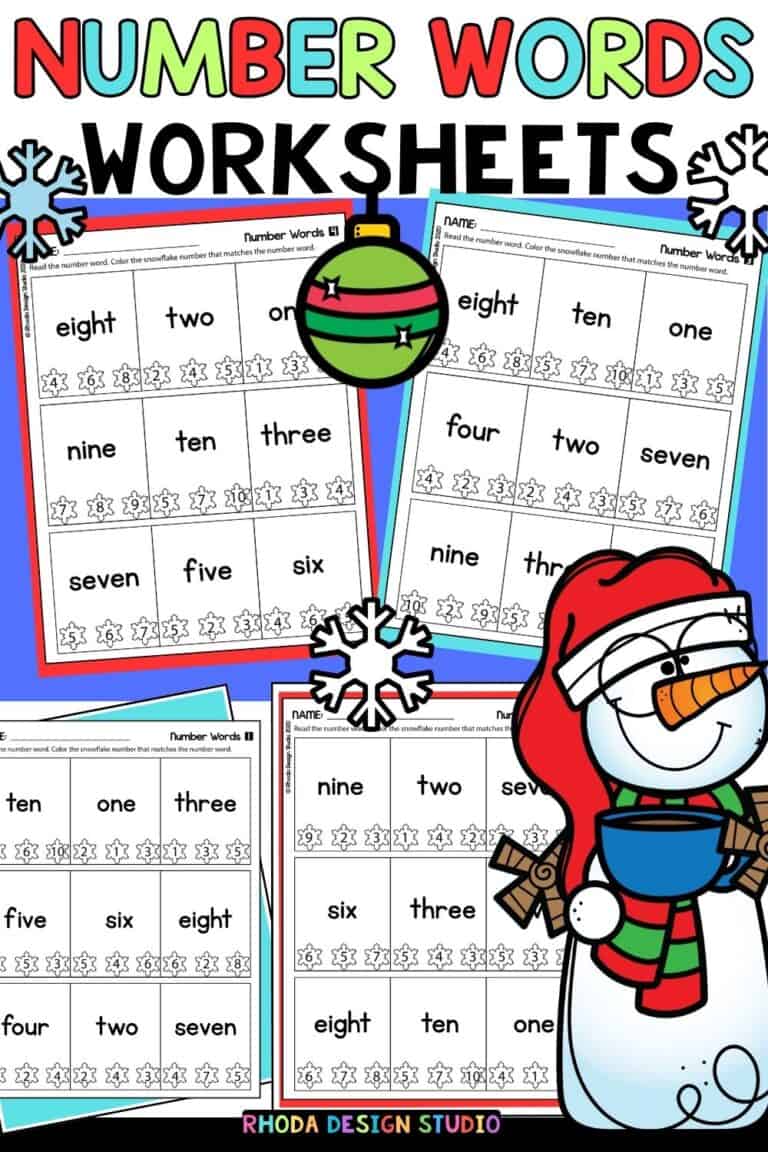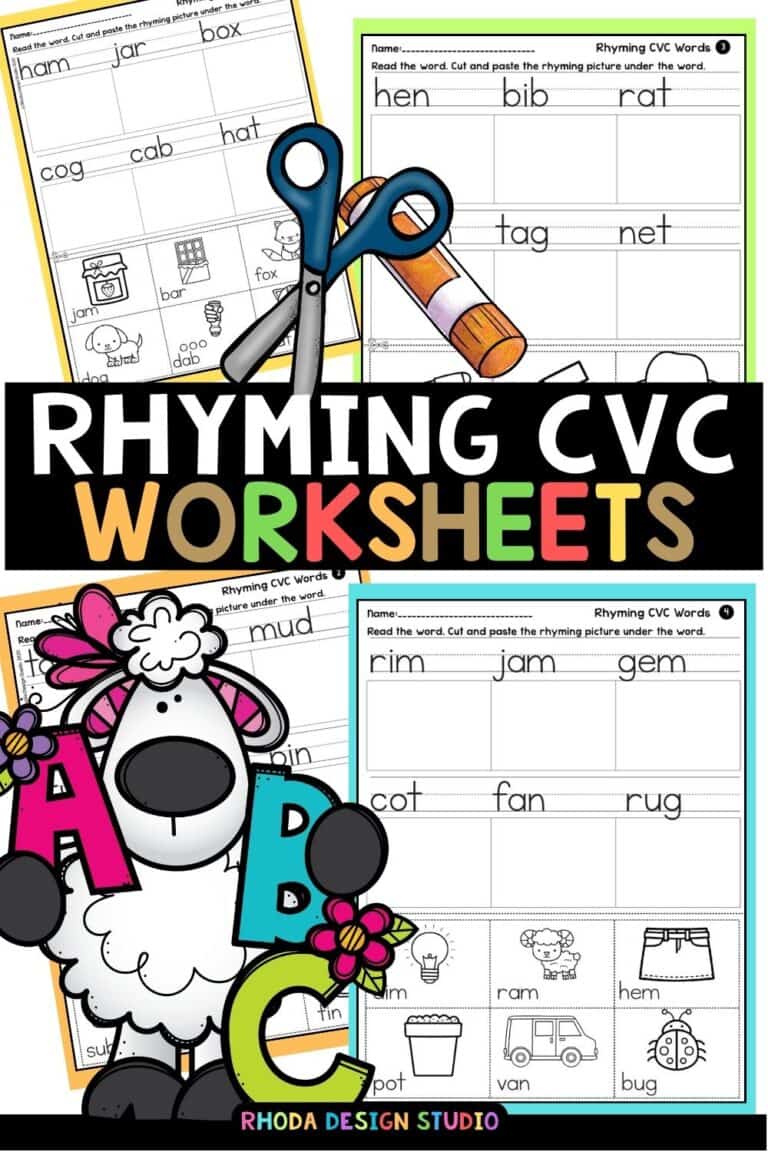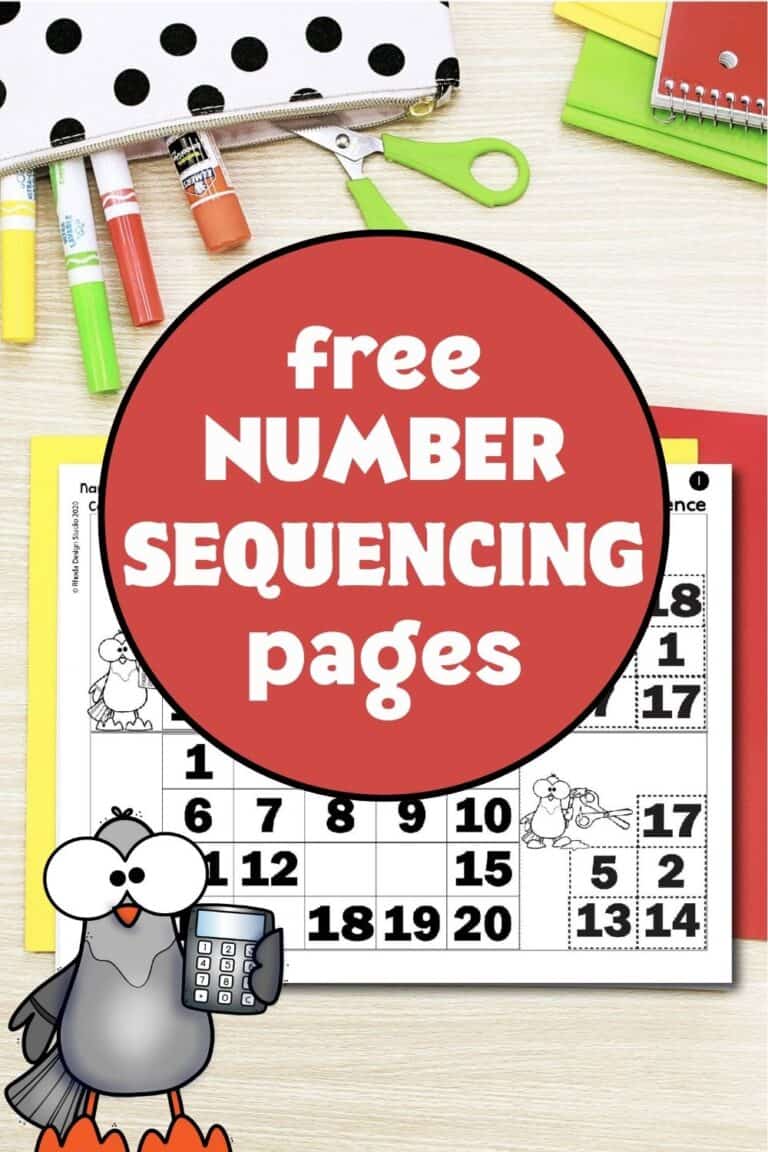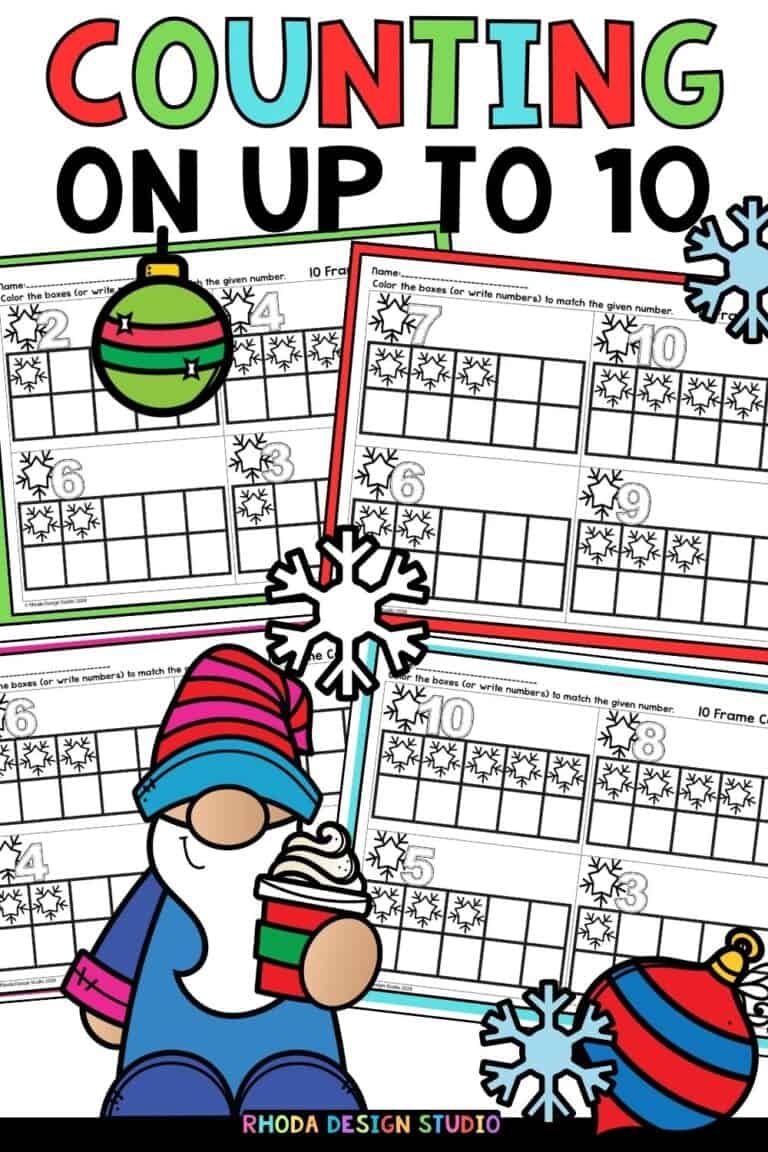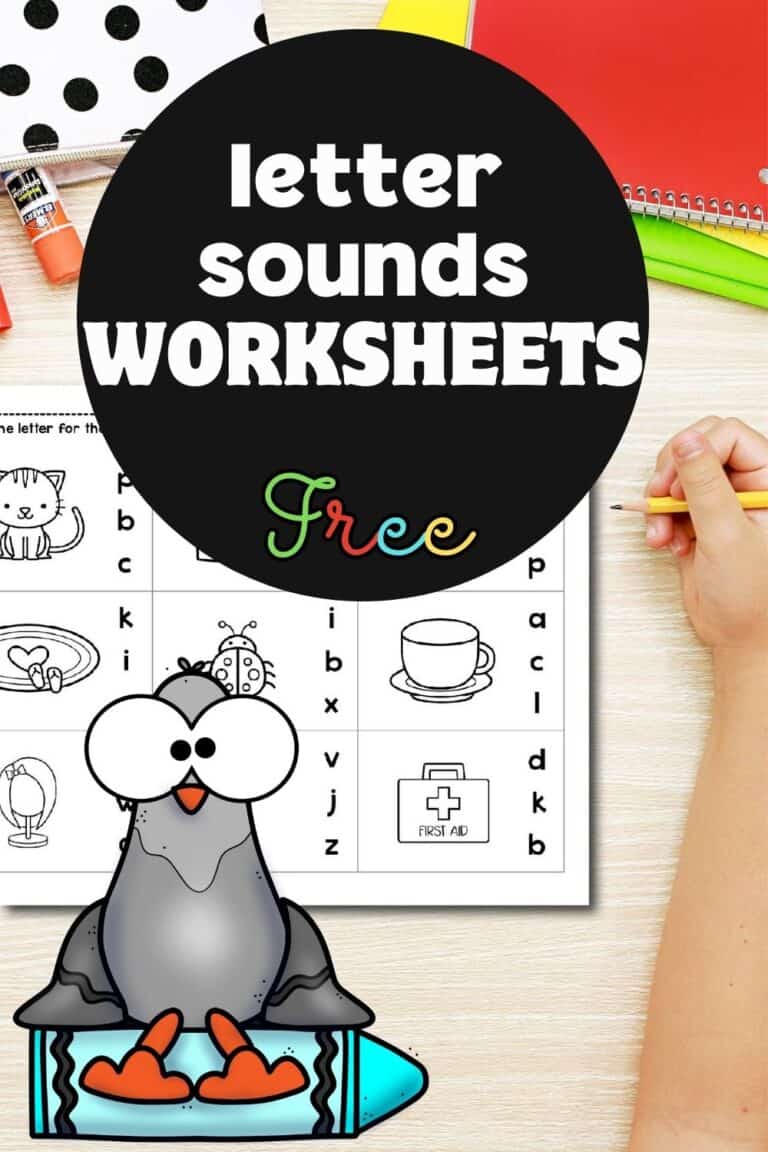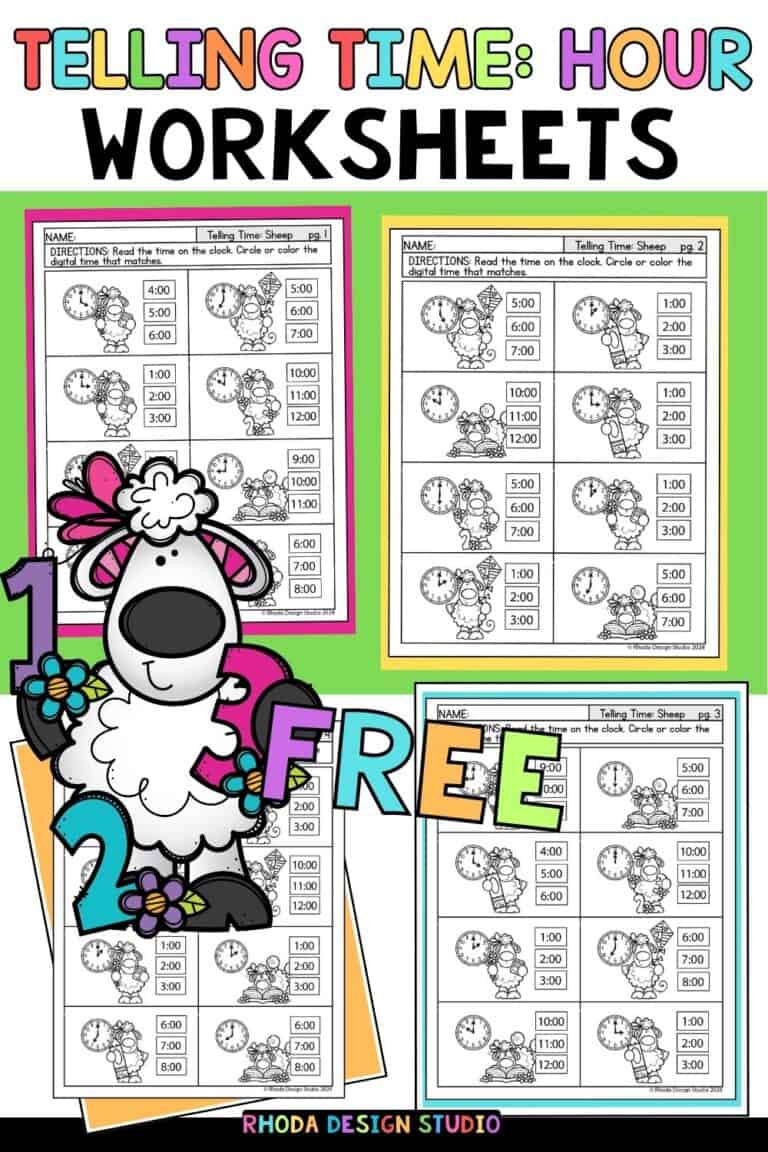How Many CVC Words Are There? Free CVC Word Lists
Early literacy and phonics are the stepping stones that pave the way for young readers. Among the foundational concepts, the CVC (consonant-vowel-consonant) word pattern is a crucial one that ignites a child’s reading abilities.
For teachers, parents, and homeschoolers, understanding CVC words and implementing them effectively is key to early reading success. In this comprehensive guide, we’ll explore what CVC words are, their significance, and provide you with lists of these essential words to foster literacy growth in young minds.
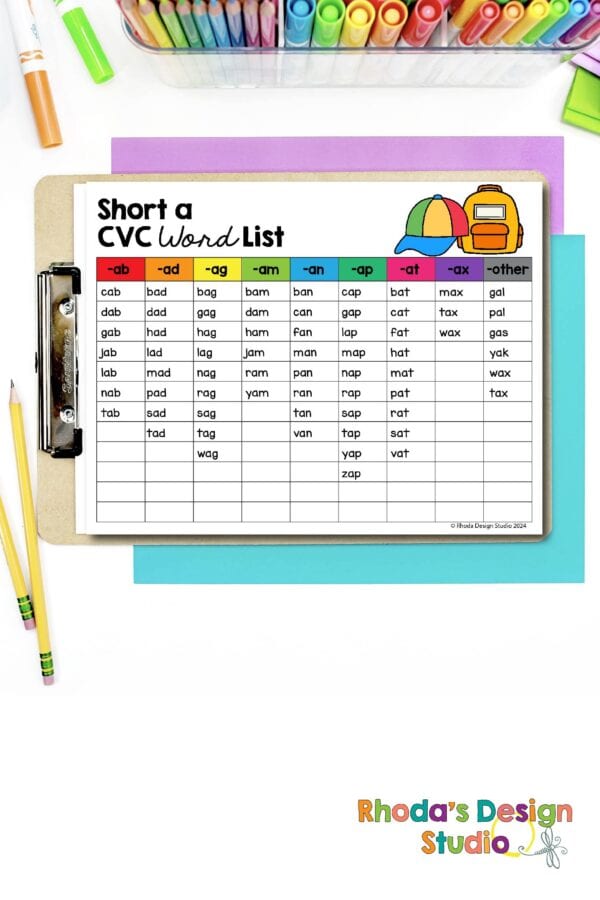
What are all the CVC words?
CVC words are at the core of the “word family” technique in early reading education. They consist of a consonant, a vowel, and another consonant, hence the C-V-C label. For example, cat, dog, and sit are all CVC words. Frequently, CVC words are the first words a child learns to read and write independently.
By understanding the sounds each letter makes and blending them together from left to right, children can build a variety of words, lay the foundation for spelling, and develop confidence in their reading skills.
What grade level is CVC words?
CVC words typically form part of the curriculum in kindergarten and first grade. These words mark the beginning of word blending and reading short sentences. They are an intersection of phonemic awareness and the beginning stages of phonics, making them perfect for early readers to practice with.
Children are introduced to CVC words as early as 3 or 4 years old, and they continue to work with them through the age of 7 or 8, where the beginning and ending consonant blends become integrated into their reading and oral language development.
CVC Word Lists
Creating an arsenal of CVC words can really complement a child’s training. These lists are extensive and can be tailored to the level at which the child reads. The following categories break down CVC words based on the short vowel sounds they contain and the word families.
Each set of CVC words has a printable worksheet for students in color and black and white to practice CVC reading fluency practice. There is also a teacher page for scoring. This can be used for progress monitoring and tracking student growth.
Word families included in this checklist are: -ab, -ad, -ag, -am, -an, -ap, -ar, -at, -ax, -ed, -eg, -em, -en, -et, -ib, -id, ig, -im, -in, -ip, -it, -ix, -ob, -od, -og, -op, -ot, -ow, -ox, -ub, -ud, -ug, -um, -un, and –ut.
Short A CVC Words
- ab: cab, dab, gab, jab, lab, nab, tab
- ad: bad, dad, had, lad, mad, pad, sad, tad
- ag: bag, gag, hag, lag, nag, rag, sag, tag, wag
- am: bam, dam, ham, jam, ram, yam
- an: ban, can, fan, man, pan, ran, tan, van
- ap: cap, gap, lap, map, nap, rap, sap, tap, yap, zap
- at: bat, cat, fat, hat, mat, pat, rat, sat, vat
- ax: max, tax, wax
- Other: gal, pal, gas, yak
Short E CVC Words
- ed: bed, fed, led, red, wed
- eg: beg, keg, leg, peg
- en: den, hen, men, pen, ten
- et: bet, get, jet, let, met, net, pet, set, vet, wet, yet
- Other: yes, web, gem, hem, pep
Short I CVC Words
- ib: bib, nib, rib
- id: bid, did, hid, kid, lid, rid
- ig: big, dig, fig, gig, jig, pig, rig, wig, zig
- im: dim, him, rim
- in: bin, din, fin, pin, sin, tin, win
- ip: dip, hip, lip, nip, rip, sip, tip, zip
- it: bit, fit, hit, kit, lit, pit, sit, wit
- Other: him, mix, six, fix
Short O CVC Words
- ob: cob, gob, job, lob, mob, rob, sob
- og: bog, cog, dog, fog, hog, jog, log
- op: cop, hop, mop, pop, top
- ot: cot, dot, got, hot, jot, lot, not, pot, rot, tot
- ow: bow, cow, how, row, wow
- ox: box, fox, pox,
- Other: rod, sod, mom
Short U CVC Words
- ub: cub, hub, nub, rub, sub, tub
- ud: bud, cud, dud, mud
- ug: bug, dug, hug, jug, lug, mug, pug, rug, tug
- um: bum, gum, hum, mum, sum
- un: bun, fun, gun, nun, pun, run, sun
- ut: but, cut, gut, hut, jut, nut, rut
- Other: pup, cup, bus
CVC words are just starting points. After learning these, blends and digraphs are added. Word combinations can be expanded by mixing and matching the ending sounds with different beginning sounds and the vowels.
Teaching CVC Words
When teaching CVC word patterns, it is important to keep the sessions engaging and multi-sensory. Utilize flashcards, word blocks, magnetic letters, and technology to incorporate auditory, visual, and kinesthetic learning. Highlight patterns and word families to reinforce the understanding that many words are constructed with the same base letters and sounds, with only one or two letters changing to create a new word.
Involve plenty of reinforcement through games, such as “CVC word bingo,” “CVC word hopscotch,” or “CVC word memory match.” Making learning interactive and enjoyable will ensure the knowledge sticks. Celebrate every milestone achieved as the child progresses from blending sounds to reading full CVC words and sentences.
CVC Word List PDF
To aid your teaching and learning, download our curated CVC Word Lists PDF. This invaluable resource packs all the CVC words by vowel sound. It can be used for lesson planning, creating educational materials, or as a reference guide for educators and parents alike.
Download CVC Word Lists PDF and Progress Monitoring Printables
Teaching CVC words is an exciting step in the reading development of young learners. By providing a strong foundation with CVC word lists and integrating them creatively into teaching, you are nurturing the next generation of readers. Keep the sessions varied, positive, and supportive, and you will witness the joy of literacy blossoming in the young minds you are guiding.
More CVC Lessons and Worksheets
Why Your Child Needs to Practice CVC Word Lists
Beginning Letter Sounds: Easy CVC Word Worksheets
I Can Read CVC Sentences: 10 Free Reading Worksheets
I Can Read CVC Words with Pictures: 10 Free Worksheets
Free CVC Spelling Worksheets: Word Work Practice
